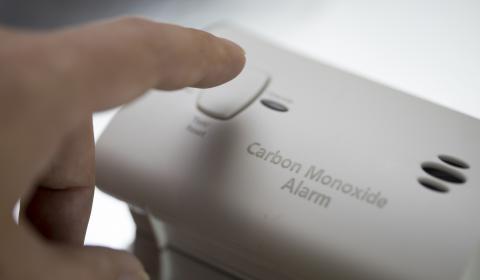
Does Your Building Have a Ninja Killer?
Silent, stealthy, and potentially deadly. Like a ninja creeping through the night, the victims of carbon monoxide do not hear it, smell it, or even taste it coming. I read an article recently in Lodging Magazine about this “silent killer”. The article told the tragic story of three people who died from carbon monoxide poisoning after staying in the same hotel room a number of weeks apart.
The cause of the lethal carbon monoxide leak was ultimately determined to be the damaged pool heater’s exhaust pipe which ran directly under this same room. In this case, the hotel manager has been charged with involuntary man slaughter. Serious stuff. And, I am guessing anyone who watched the local news, or caught the story on national news, will never stay at this hotel.
What is Carbon Monoxide?
Carbon monoxide is by-product of combustion. If you have a combustible material burning, carbon monoxide is produced. This means that any of the following items will be producing carbon monoxide in a building: cars (in an attached or subterranean garage), emergency generators, fuel-burning furnaces, boilers, room heaters, water heaters, pool heaters, fire places (gas and wood), and gas fired stoves, etc.
Carbon monoxide build-up can be caused by a malfunction of the equipment, or by a damaged exhaust pipe. Inhaling carbon monoxide can make people and animals sick, or worse in the case of the nationally reported deaths in the hotel that I read about. It all depends on the level of exposure. Building owner and managers need to be vigilant in their preventative maintenance and inspections related to this silent killer to avoid exposing residents, occupants and guests to the poison.
How do You Prevent Carbon Monoxide Build-up and Exposure in Your Building?
1) Inspect all potential sources of carbon monoxide on a regular basis, including equipment and exhaust pipes, and maintain them to the highest standards. Hire your service contractors for this if you don’t have an in-house team with appropriate knowledge.
2) Re-inspect exhaust pipes after any natural disaster such as an earthquake, hurricane, or a major snow storm. Even a small puncture, clog, or shift in an exhaust pipe could cause a build-up.
3) Be diligent about your maintenance program and check references and qualifications of any contractors or vendors.
4) Install carbon monoxide alarms near each potential source ($50-100 each).
The scariest thing about carbon monoxide is that you can’t tell it’s there, unless you have a functioning electronic detection device. Carbon monoxide is colorless, odorless, and tasteless. According to the US Consumer Safety Product Commission, an average of 170 people die from carbon monoxide poisoning every year, and carbon monoxide poisoning leads to thousands of emergency room visits. Don’t let your building contribute to these statistics.
Be vigilant and contact your 3rd Party Due Diligence Provider about maintenance and inspections of the carbon monoxide sources and exhaust pipes to save you money in the long run, and prevent horrible disasters from this silent killer.
For more information, contact Aliza Stern, Principal and Executive Vice President.